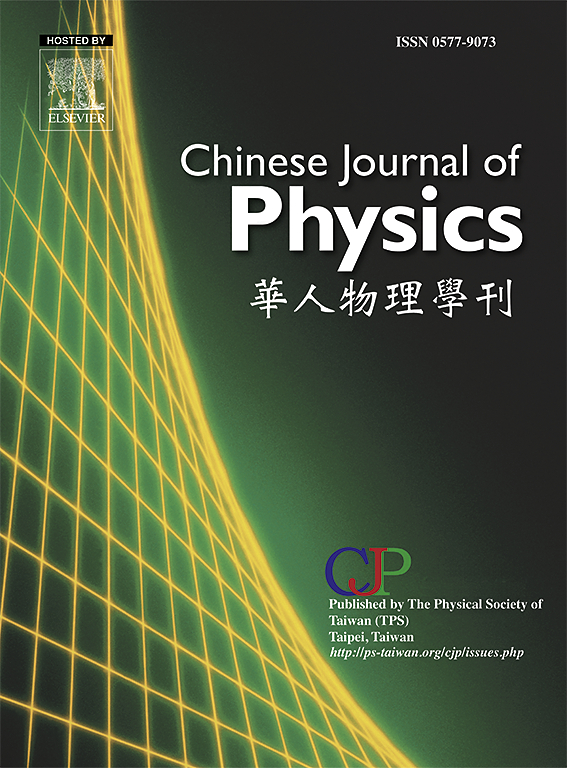Lie Symmetries, exact solutions, and stability analysis of the (2+1)-dimensional modified Kadomtsev–Petviashvili equation in nonlinear wave dynamics and systems
IF 4.6
2区 物理与天体物理
Q1 PHYSICS, MULTIDISCIPLINARY
引用次数: 0
Abstract
This paper analyzes the group invariant solutions of the modified Kadomtsev–Petviashvili (mKP) equation using the Lie symmetry approach. Due to its cubic nonlinearity, the mKP system has rich physical and mechanical relevance. Nonlinear waves propagate at nonuniform velocities, which can be described by nonlinear evolution equations (NLEEs) and their solutions using arbitrary functions. Integrating a nonlinear evolution equation displays the various aspects of natural occurrences. The Lie symmetry transformation method is responsible for reducing the number of independent variables in the system and forming ordinary differential equations (ODEs). These reduced ODEs are solved with some imposed parametric restrictions. These solutions are more general than previously established results due to the existing arbitrary functions. The derived solutions are mainly kink waves, anti-kink waves, negatons, positons and elastic multisolitons. Further, using bifurcation theory, stability analysis of the results has been shown to make the research more worthy. We use phase portraits to explore the remarkable characteristics of the exact wave solutions. These portraits confirm the existence of certain families of homoclinic and periodic orbits around the equilibrium points. Finally, a brief discussion on the solutions of mKP has been made, showing the richness of our results due to several arbitrary constants and functions.
求助全文
约1分钟内获得全文
求助全文
来源期刊

Chinese Journal of Physics
物理-物理:综合
CiteScore
8.50
自引率
10.00%
发文量
361
审稿时长
44 days
期刊介绍:
The Chinese Journal of Physics publishes important advances in various branches in physics, including statistical and biophysical physics, condensed matter physics, atomic/molecular physics, optics, particle physics and nuclear physics.
The editors welcome manuscripts on:
-General Physics: Statistical and Quantum Mechanics, etc.-
Gravitation and Astrophysics-
Elementary Particles and Fields-
Nuclear Physics-
Atomic, Molecular, and Optical Physics-
Quantum Information and Quantum Computation-
Fluid Dynamics, Nonlinear Dynamics, Chaos, and Complex Networks-
Plasma and Beam Physics-
Condensed Matter: Structure, etc.-
Condensed Matter: Electronic Properties, etc.-
Polymer, Soft Matter, Biological, and Interdisciplinary Physics.
CJP publishes regular research papers, feature articles and review papers.
 求助内容:
求助内容: 应助结果提醒方式:
应助结果提醒方式:


